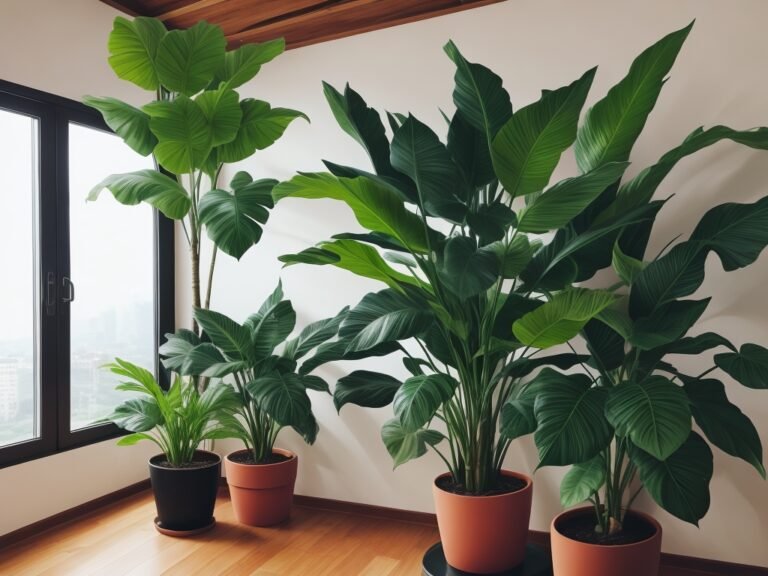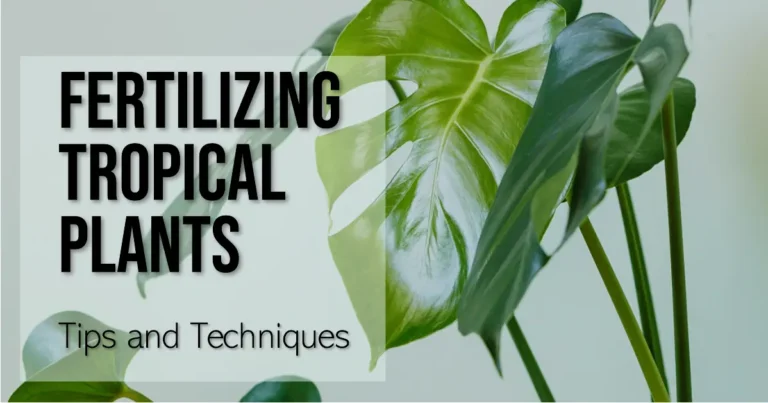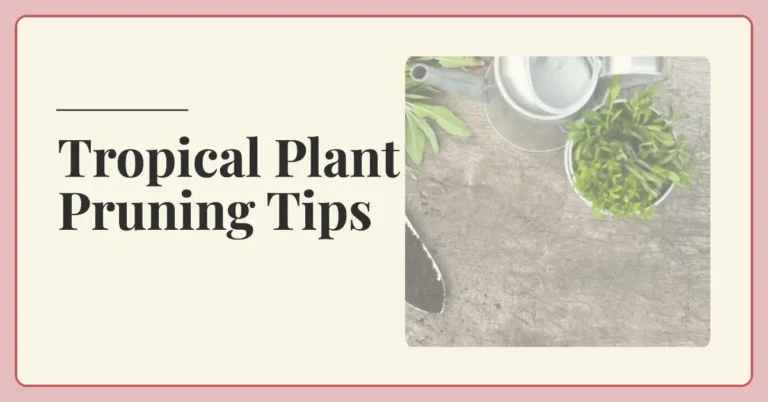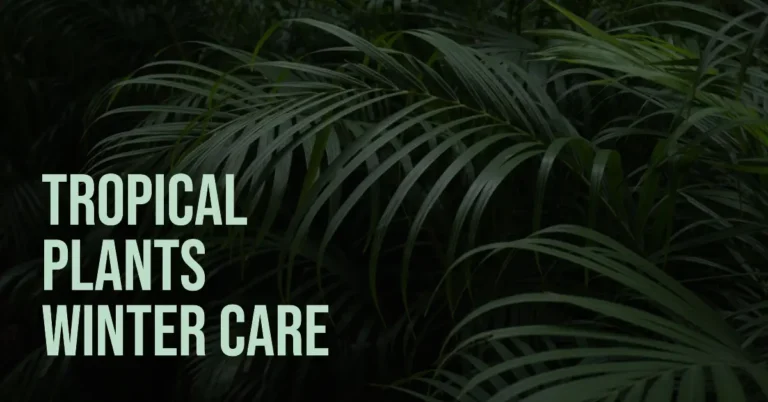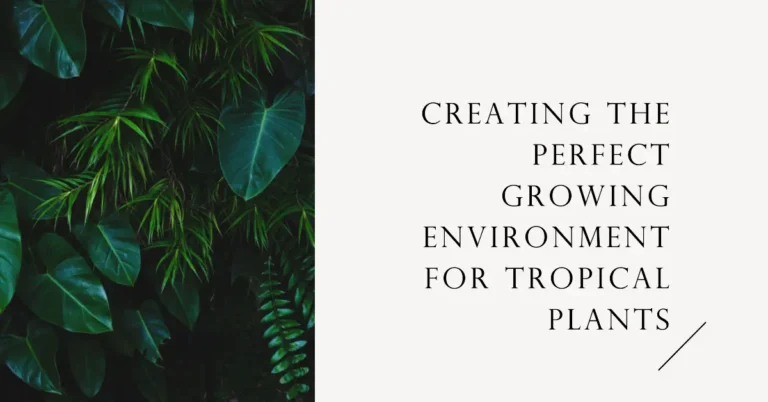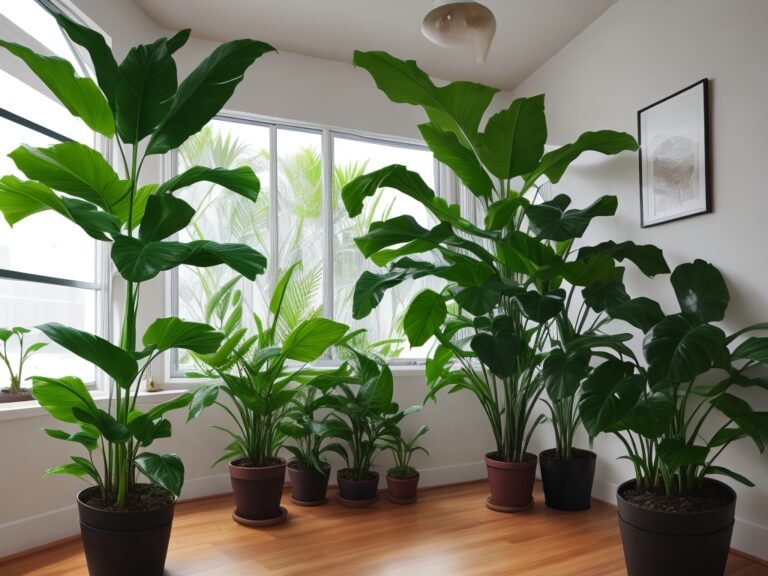Master the Art of Growing Tropical Plants Indoors with Me
Welcome to the world of indoor gardening, where we’ll explore the joy and benefits of growing tropical plants inside your home. Whether you’re a seasoned plant enthusiast or simply looking to add some life to your interior decor, you’re in the right place. I’m excited to share my knowledge of tropical houseplants and indoor gardening techniques.
Key Takeaways:
- Growing tropical plants indoors can add vibrancy and life to your home decor.
- Indoor gardening has numerous benefits, including purifying the air and reducing stress levels.
- Tropical houseplants require specific care and attention, but with the right techniques, they can thrive indoors.
- Choosing the right tropical plant species, creating the ideal indoor environment, and proper care practices are essential for successful indoor gardening.
- Connecting with the indoor plant enthusiast community can be a rewarding experience.
Choosing the Right Tropical Plant Species for Indoor Growth
Now that we’ve explored the exciting world of growing tropical plants indoors, it’s time to choose the best plant species for your indoor garden.
Many tropical plant species thrive indoors, but each has unique characteristics and requirements. It’s important to select plants that will grow well in the environment you can provide.
The following list includes some of the best indoor tropical plants:
- Bromeliads: These exotic plants are easy to care for and come in various colors and textures. They thrive in bright, indirect light and humid environments.
- Philodendrons: A classic tropical houseplant that is low maintenance and great for beginners. They require moderate indirect light and a well-draining potting mix.
- Ficus: Also known as a weeping fig, this plant has lush green leaves and can grow up to ten feet tall indoors. They prefer bright, indirect light and regular watering.
- Snake Plant: This plant is ideal for low-light environments and is drought-tolerant. It has tall, elegant leaves and is a great air purifier.
- Crotons: These plants have colorful, variegated leaves in various sizes and shapes. They require bright, indirect light and well-draining soil.
These are just a few examples of the many tropical plants that can thrive indoors. Remember to research the requirements of each plant before making a purchase and consider your available space and resources.
Creating the Ideal Indoor Environment for Tropical Plants
As an indoor gardener, it’s important to understand that tropical plants have specific requirements to thrive in an indoor environment. It’s essential to create an environment replicating their natural habitat as much as possible. Here’s what you need to keep in mind when it comes to indoor plant care and creating the perfect tropical plant environment:
Temperature
Most tropical plants prefer temperatures between 65-75 degrees Fahrenheit during the day and slightly cooler temperatures at night. Avoid placing your plants near drafty windows or doors, as this can cause temperature fluctuations detrimental to their well-being.
Humidity
Tropical plants require higher humidity levels than what is typically found indoors. Aim to keep the humidity level around 60%. This can be achieved by placing a humidifier nearby, misting your plants regularly, or grouping them together to create a naturally humid microclimate.
Light
Light is a crucial factor in tropical plant care. Most tropical plants thrive in bright, indirect light, but different species have different light requirements. Be sure to research and understand the specific light needs of your plant species, and adjust their placement accordingly. You can also use artificial light sources, such as grow lights, to provide the necessary light for your plants.
Air Circulation
Good air circulation prevents stagnant air and promotes healthy plant growth. Place your plants in areas with good air circulation, such as near an open window or fan. You can also gently move the leaves of your plants or use a small fan to create gentle air movement.
Considering these factors, you can create the ideal environment for your indoor tropical plants to thrive. Remember to regularly monitor the temperature, humidity, and light levels, and adjust to maintain optimal plant conditions.
Essential Tips for Watering and Feeding Indoor Tropical Plants
Proper watering and feeding are essential care practices every indoor tropical plant owner should master. These practices contribute to the health and thriving of your plants, ensuring their longevity and vibrancy.
Watering: Unlike outdoor plants, indoor tropical plants require less frequent watering. Overwatering can lead to root rot, so it’s crucial to understand your plant’s specific watering needs. First, check the moisture level of your plant’s soil by inserting your finger about an inch deep. If the soil feels dry, it’s time to water. Use room-temperature water and add enough to moisten the soil without saturating it.
Feeding: Indoor tropical plants require a balanced fertilizer during their growing season (spring and summer). Follow the instructions on your fertilizer packaging and apply it every 2-4 weeks. However, during the dormant season (fall and winter), you should reduce or completely stop fertilizing your plants.
Remember to dust off your plant’s leaves regularly with a damp cloth to ensure optimal sunlight absorption. Also, avoid placing your plants near heating or cooling sources as this can result in dry air and cause your plants to wilt.
Ensuring Proper Drainage and Potting Mix for Tropical Plants
Proper drainage and potting mix are key factors in ensuring the health and growth of your indoor tropical plants. These factors help prevent root rot and other issues caused by overwatering and poor drainage. Here are some essential tips for ensuring proper drainage and potting mix:
Choosing the Right Pot
When selecting a pot for your indoor tropical plant, choosing one with drainage holes is crucial. Excess water can accumulate without proper drainage in the pot, drowning the roots and causing the plant to wither and die.
Make sure to choose a pot with a size appropriate for your plant. A pot that is too small can stunt the growth of the roots and limit the plant’s potential, while a pot that is too large can hold too much moisture, leading to overwatering.
The Right Potting Mix
Choosing the right potting mix is also important for the health of your indoor tropical plants. A good quality potting mix should be well-draining, moisture-retentive, and nutrient-rich.
Look for a mix that contains peat moss, perlite, or vermiculite, as these materials help improve drainage, aeration, and water retention. Avoid using garden soil as it can be too dense and heavy for indoor plants.
Repotting and Soil Maintenance
It’s recommended to repot your indoor tropical plants every 1-2 years to ensure adequate nutrients and space for growth. Repotting also allows you to refresh the potting mix and check the health of the root system.
When repotting, gently remove the plant from the old pot, loosen any tangled roots, and gently prune any damaged or unhealthy roots. Add fresh potting mix to the new pot and place the plant in the center, making sure it’s at the same depth as before. Water the plant thoroughly after repotting.
Regular soil maintenance is also essential for the health of your indoor tropical plants. Remove dead or yellowing leaves, and check the soil moisture regularly to ensure it’s not too dry or too wet.
- Choose a pot with drainage holes to prevent excess water accumulation.
- Use a well-draining, moisture-retentive, and nutrient-rich potting mix.
- Repot your indoor tropical plants every 1-2 years.
- Regularly remove dead or yellowing leaves and check soil moisture.
Tip: When repotting, gently loosen any tangled roots and prune any damaged or unhealthy roots to promote healthy growth.
Managing Pests and Diseases in Indoor Tropical Plants
Keeping your indoor tropical plants healthy involves more than just watering and fertilizing. Unfortunately, pests and diseases can sometimes find their way into your plants, causing damage and potentially killing them. But don’t worry. There are several methods to identify and manage these issues before they take hold. Here are some tips for managing
Identifying Pests
The first step in managing pests is identifying them. Some common pests that may affect your indoor tropical plants include spider mites, mealybugs, thrips, and scale insects. These pests are typically visible to the naked eye, but you may need to inspect the leaves and stems of your plants closely to spot them.
Controlling Pests
There are several methods for controlling pests in your indoor plants. One effective technique is to use an insecticidal soap or oil spray. These sprays suffocate and dry out the pests, eliminating them without harming your plants. Another option is introducing natural predators such as ladybugs or lacewings to your plant’s environment. These predators feed on the pests and help control their population.
Identifying Diseases
Diseases in indoor tropical plants can manifest in several ways, including wilting, yellowing leaves, and spots on the leaves. Common diseases affecting indoor plants include powdery mildew, root rot, and bacterial leaf spot.
Controlling Diseases
To control diseases in your indoor tropical plants, it’s essential to take a preventative approach. Ensure that your plants have adequate drainage and avoid overwatering, which can create a damp environment that promotes disease growth. If you notice signs of disease, remove and dispose of the affected leaves or stems immediately to prevent the spread of the disease. Additionally, sterilize your tools and pots to prevent cross-contamination.
By following these tips, you’ll be able to manage pests and diseases in your indoor tropical plants and keep them healthy and thriving.
Propagating and Repotting Indoor Tropical Plants
One of the joys of indoor gardening is being able to propagate and repot your plants to help them thrive and grow. Here are some tips on propagating and repotting indoor tropical plants.
Propagating Indoor Tropical Plants
Propagating indoor tropical plants can be done through several methods, including stem cutting, division, and layering. Each method requires different techniques and timing.
Stem cutting: This method involves cutting a stem from the mother plant and placing it in water or moist soil until roots form. Once the roots are established, it can be replanted in soil.
Division: This involves separating the mother plant into smaller sections and replanting them in their own pots. This method is suitable for plants with multiple stems or a clumping growth habit.
Layering: This method involves bending a stem to the soil and securing it with a stake or pin. The stem will eventually grow roots and can then be separated from the mother plant and replanted.
Repotting Indoor Tropical Plants
Repotting indoor tropical plants is necessary to accommodate their growth and provide ample space for their roots. Here are some tips on when and how to repot your indoor tropical plants.
When to repot: Repot your plant when its roots start to outgrow the current pot or when the soil has become too compacted. Signs that it’s time to repot include roots growing out of the drainage holes, stunted growth, and yellowing leaves.
How to repot: Choose a pot that is one size larger than the current pot and has drainage holes. Fill the bottom of the new pot with fresh potting mix and gently remove the plant from its old pot. Loosen the roots and place the plant in the new pot, filling in the gaps with additional potting mix. Water the plant thoroughly.
By propagating and repotting your indoor tropical plants, you can help them thrive and grow into lush and vibrant additions to your indoor garden.
Styling and Decor Tips for Indoor Tropical Plants
Indoor gardening is not just about growing plants for their health benefits; it can also enhance the aesthetic appeal of your home. With some creativity, you can incorporate indoor tropical plants into your decor, adding a touch of greenery and exotic flair to your living space.
Here are some indoor plant tips for styling and decorating with tropical plants:
- Choose pots that complement your home decor and the size of your plants. Consider using colorful pots or those with unique designs to add a pop of visual interest.
- Group plants of different sizes and species together to create a visually striking arrangement. You can also use a variety of pot heights to add depth to your display.
- Hang plants in macrame hangers or wall-mounted planters to add variety to your display.
- Place plants on shelves, tables, or a terrarium to create a dynamic and eye-catching display.
- Use natural materials such as bamboo or woven baskets for a tropical touch.
- Consider adding complementary accessories such as stones, moss, or figurines to enhance the ambiance of your indoor garden.
With these indoor plant tips, you can create a beautiful and inviting indoor tropical garden that will be the envy of your visitors.
Popular Exotic Tropical Plants for Indoor Cultivation
If you’re looking to add some exotic flair to your indoor garden, plenty of tropical plants thrive indoors. These plants come in various colors, shapes, and sizes, making them perfect for adding interest to any room.
One popular choice for indoor cultivation is the Bromeliad. These plants feature striking foliage and vibrant flowers and are relatively easy to care for. They thrive in bright, indirect light and prefer watered from the bottom.
Another favorite is the Calathea, the “prayer plant.” These plants have beautiful patterned leaves that fold up at night, making them an interesting addition to any space. They prefer low to medium light and must be moist but not wet.
The Bird of Paradise is a stunning tropical plant that can be grown indoors in the right conditions. These plants need bright, indirect light and prefer to be slightly dry. Their vibrant orange and blue flowers make a bold statement in any room.
If you’re looking for something more unusual, consider the Tillandsia, the “air plant.” These plants don’t need soil to grow and can be mounted on various surfaces, making them a versatile choice for small spaces. They prefer bright, indirect light and need to be misted regularly.
Regardless of which exotic tropical plants you choose, research their specific care requirements and provide them with the appropriate environment to thrive. With patience and attention, you can create a lush indoor oasis that will transport you to a tropical paradise.
Essential Tips for Watering and Feeding Indoor Tropical Plants
Proper watering and fertilizing are crucial for the health and growth of indoor tropical plants. Here are some essential tips to keep in mind:
Watering
1. The watering frequency depends on the plant species, the pot size, and the environmental conditions. As a general rule, it’s better to be underwater than overwater, as too much water can lead to root rot.
2. To determine if your plant needs water, stick your finger into the soil up to your second knuckle. If the soil feels dry, it’s time to water.
3. Water your plants thoroughly until water flows out of the drainage holes in the bottom of the pot, ensuring the entire root system gets hydrated.
4. Use room-temperature filtered water instead of tap water, which may contain harmful chemicals that can damage your plants.
Fertilizing
1. Indoor tropical plants require regular fertilization to replenish the nutrients in the soil that are depleted over time.
2. Choose a high-quality, water-soluble fertilizer specifically formulated for indoor plants, and follow the manufacturer’s instructions for application.
3. Avoid over-fertilizing, as this can cause fertilizer burn and damage to the plant roots.
4. During the winter months, when plants are dormant, reduce the frequency of fertilizing to once every two months.
Following these watering and feeding tips can help your indoor tropical plants thrive and remain healthy.
Connecting with the Indoor Plant Enthusiast Community
If you are passionate about indoor gardening, connecting with fellow indoor plant enthusiasts can be a fantastic way to expand your knowledge and share your experiences. Whether you are a beginner or an experienced gardener, there are many ways to connect with like-minded individuals who share your enthusiasm for indoor plants.
One great way to connect with indoor plant enthusiasts is through online forums, such as Reddit’s indoor gardening subreddit or GardenWeb’s forum. These forums are vibrant communities where gardeners of all skill levels can chat and exchange advice on plant care, propagation, and troubleshooting topics.
Social media platforms are also excellent resources for connecting with indoor gardening enthusiasts. Instagram is particularly popular among plant lovers, and you can easily find and follow fellow enthusiasts by searching for the hashtags #indoorplants or #indoorjungle. Many Instagrammers also share their favorite tips and tricks for plant care and styling.
Attending local plant swaps or workshops is another great way to connect with fellow indoor plant enthusiasts in your area. These events are excellent opportunities to meet other gardeners, learn new techniques, and perhaps even trade some of your own plant cuttings.
Connecting with the indoor plant enthusiast community is a rewarding experience that can enhance your indoor gardening journey and provide a valuable support network. So why not join in and start sharing your love for indoor plants?
Conclusion: Embracing the Joy of Growing Tropical Plants Indoors
In conclusion, I hope this journey of growing tropical plants indoors has inspired you to embark on your own indoor gardening adventure. The benefits of having tropical houseplants in your home are undeniable, from reducing stress levels to improving air quality.
Indoor gardening is a rewarding hobby that can add beauty and life to your living space. You can create a lush oasis in the comfort of your home by choosing the right tropical plant species, creating an ideal indoor environment, and providing proper care and maintenance.
Remember, growing tropical plants indoors is not only about creating a beautiful space but also about the joy and satisfaction that comes with watching your plants thrive. As you continue your indoor gardening journey, don’t forget to connect with the indoor plant enthusiast community to share your experiences and learn from others.
So, what are you waiting for? Start your indoor gardening adventure today and experience the joy of growing tropical plants indoors.
FAQs
What are the benefits of growing tropical plants indoors?
Growing tropical plants indoors can enhance the aesthetic appeal of your space, improve indoor air quality, and create a soothing and tropical atmosphere.
How do I choose the right tropical plant species for indoor growth?
When choosing tropical plants for indoor growth, consider factors such as light requirements, space availability, and your level of gardening experience. Research the characteristics and care requirements of different plant species to find the best fit for your indoor space.
How can I create the ideal indoor environment for tropical plants?
To create the ideal indoor environment for tropical plants, maintain a stable temperature between 65-85°F, provide adequate humidity through misting or using a humidifier, and ensure they receive the right amount of indirect sunlight or artificial light.
What are some essential tips for watering and feeding indoor tropical plants?
Water your indoor tropical plants when the top inch of soil feels dry, ensuring proper drainage to avoid waterlogging. Use a balanced fertilizer specifically formulated for indoor plants and follow the instructions on the label for feeding frequency.
How important is proper drainage and potting mix for tropical plants?
Proper drainage is vital for tropical plants to prevent root rot. Choose pots with drainage holes and use a well-draining potting mix that retains moisture without becoming waterlogged.
How do I manage pests and diseases in indoor tropical plants?
Keep a close eye on your tropical plants for any signs of pests or diseases such as mealybugs or fungal infections. Use natural or organic pest control methods, such as neem oil or insecticidal soap, and ensure good airflow around your plants to prevent disease outbreaks.
How do I propagate and repot indoor tropical plants?
Propagating indoor tropical plants can be done through methods like stem cuttings or division. Repotting should be done when the plant outgrows its current container, and the new pot should be slightly larger and have proper drainage.
What are some styling and decor tips for indoor tropical plants?
Consider placing your indoor tropical plants in decorative pots or planters that complement your home decor. Create a focal point by clustering plants together or incorporating them into a unique display, such as a hanging basket or vertical garden.
Which popular exotic tropical plants can be grown indoors?
Some popular exotic tropical plants suitable for indoor cultivation include orchids, bromeliads, ZZ plants, peace lilies, snake plants, and various palm species.
How can I troubleshoot common issues in indoor tropical plant care?
If your indoor tropical plants develop yellowing leaves, check for overwatering or inadequate light. Root problems can often be resolved by improving drainage and repotting if necessary. Stunted growth may indicate lack of nutrients or improper care.
How can I connect with the indoor plant enthusiast community?
You can connect with fellow indoor plant enthusiasts through online forums, social media groups dedicated to indoor gardening, and by attending local plant swaps or gardening events in your area.


